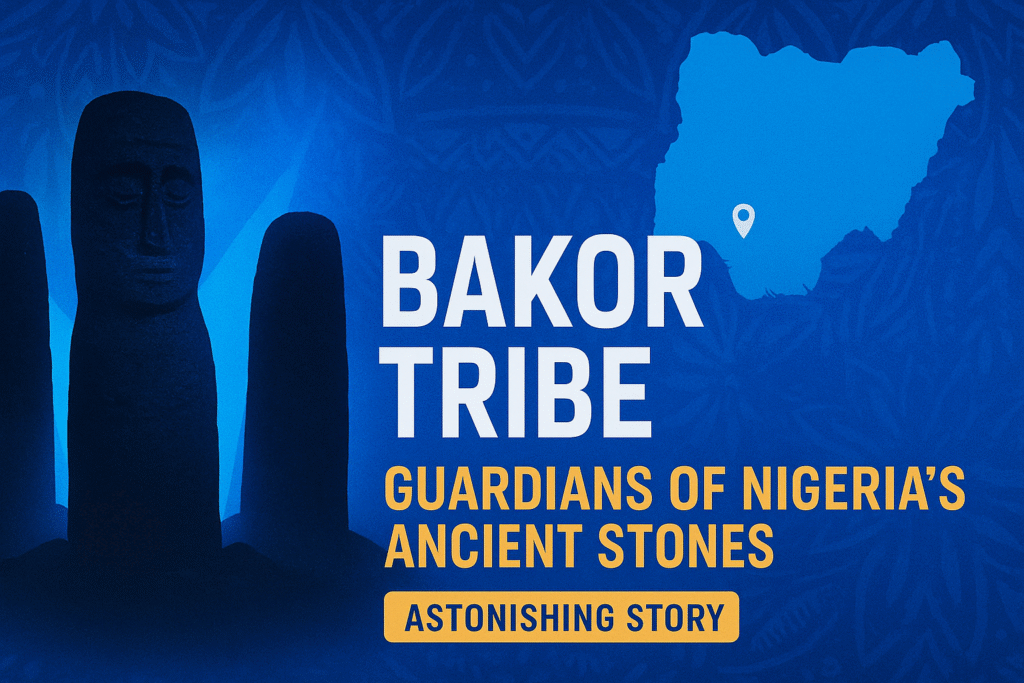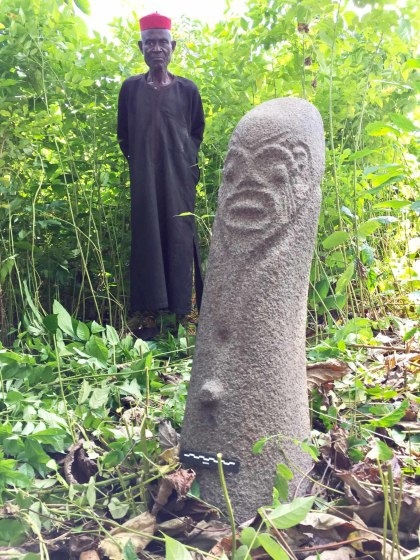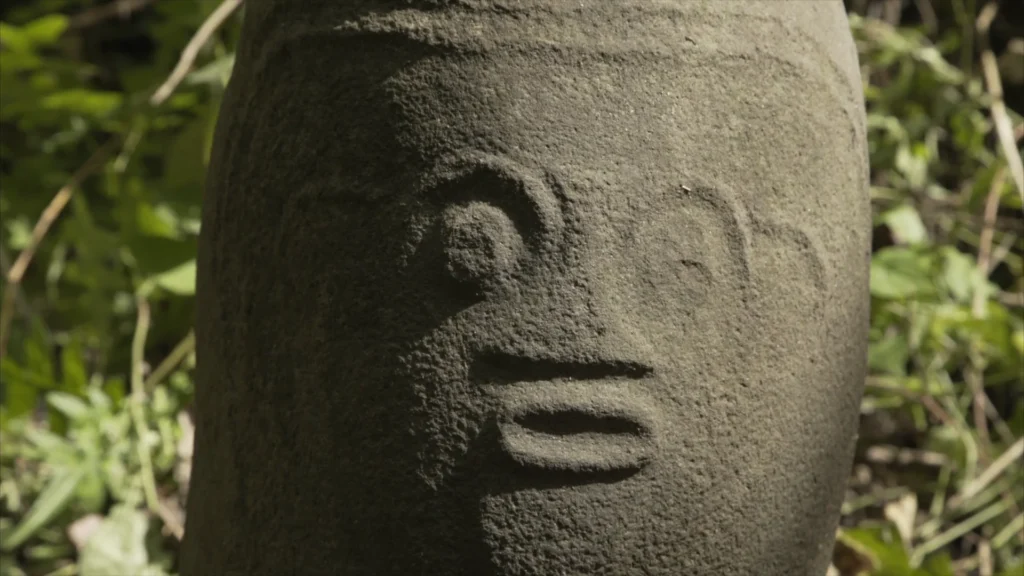The Bakor Tribe Nigeria: Astonishing Guardians of Nigeria’s Ancient Stones
The Bakor tribe Nigeria sits in the lush forests of Cross River State, where villages still gather around carved stones that seem to breathe with memory. Locals tell stories of ancestors, justice, and identity etched into rock. As you’ll see, the Bakor story isn’t only about artifacts—it’s about a living people who’ve guarded wisdom, language, and ritual for centuries. Their homeland spans communities around Ikom and parts of Ogoja, and their heritage has drawn scholars, museums, and preservationists from around the world.
Origins and Identity of the Bakor tribe Nigeria
The Bakor communities live in southeastern Nigeria’s Cross River State, especially around Ikom and into Ogoja. Culturally and historically, they’re closely tied to the broader Ejagham world, with shared stories, rituals, and artistic ideas. “Bakor” isn’t a single village—it’s a cluster of related communities with kinship ties that cross town boundaries. This cluster-based identity helps explain why customs and ceremonies echo from one settlement to the next, even when dialects differ.

From Clans to a Cultural Cluster
Local histories describe Bakor as a network of lineages once grouped in the old Ogoja Province, now part of modern Cross River. Scholars outline eight or more clan groupings, with each community keeping its origin tales and sacred spaces. This arrangement allowed families to manage land, honor ancestors, and share responsibilities for public works and ritual life.
Language Roots
Abanyom—also called Bakor in some linguistic work—is an Ekoid (Southern Bantoid) language. It’s tonal and uses a noun-class system like many Niger-Congo tongues. The language links Bakor to neighbors through trade and marriage, yet preserves distinct words, names, and praise poetry. Language also carries specialized ritual vocabulary tied to stone circles and ceremonies.
Homeland & Landscape
Bakor country sits within the Cross River rainforest belt—a mosaic of farms, palm groves, streams, and red-earth tracks. This landscape shapes daily life: yam and cassava fields dot the outskirts; cocoa and oil palm bring cash income; raffia and timber support building and craftwork.
Seasonal rhythms govern planting, festivals, and travels to market towns. Over generations, pathways between villages also became pathways of ideas—songs, stories, and skills flowed with people as they moved for marriage, trade, or ritual obligations.
Settlement Patterns
Villages tend to form around central spaces that double as meeting grounds and performance arenas. Compounds cluster by lineage; elders’ houses and shrines sit near spaces where councils convene. In many places, stone circles lie either at the heart of the village—signaling civic and ritual importance—or a little outside, where forest edges invite quiet and reverence.
Meet the Monoliths (Akwanshi/Atal)
The most striking feature of Bakor heritage is the stone monolith tradition. Locally called Akwanshi or Atal, these carved basalts and related stones stand upright in circles, often facing inward. Scholars have recorded roughly 300 monoliths across more than thirty circles, especially in and around Alok, an area of Ikom famous for open-air displays. Some stones are small enough to cradle; others reach a person’s height. Many carry stylized faces, body marks, and geometric bands.
Making Meaning in Stone
While no single “code” has been fully deciphered, researchers note recurring motifs: eyes, mouths, scarification patterns, and bands that may echo status, lineage, or initiation marks. What’s consistent in oral accounts is that the monoliths are tied to ancestors and community memory. They witnessed oaths, guarded agreements, and stood as reminders of belonging.
Dates and Chronology
Dating is complex. Some studies and museum records place the carvings broadly between the 16th and 19th centuries; other research suggests a much earlier inception—possibly around the first centuries CE. Because stones themselves can’t be radiocarbon dated, scholars rely on context, tool traces, and comparisons with older finds. The best consensus today is that monolith carving occurred over a long span, with multiple phases of use and renewal.

Circles, Ceremony, and Social Life
Monolith circles structured social life. People gathered there to settle disputes, mark initiations, inaugurate office holders, celebrate harvests, and remember the dead. Standing stones are durable by design; they anchor stories, and their endurance signals continuity—an idea that resonates across Bakor histories and songs.
Governance, Law & Ritual
Traditional leadership balances authority and accountability. Councils of elders, titled men and women, and lineage heads coordinate festivals, land matters, and inter-village relations. Ritual specialists mind shrines and offerings, ensuring balance between seen and unseen worlds. In this context, the stones are not passive monuments; they’re part of a moral landscape where truth-telling carries weight and where the past has a seat at the table.
Justice & Mediation
Disputes over land boundaries, marriage obligations, or trade debts often move from family talks to community hearings. In the old days, carefully framed oaths—sometimes in view of monoliths—could settle a case. Even now, the idea that “the ancestors are watching” shapes behavior. This isn’t only about fear; it’s about shared responsibility to live up to the name of one’s house and village.
Art, Symbols & Body Marks
Look closely at the carved faces and you’ll notice cheek and forehead motifs resembling scarification patterns. These marks are maps of identity—signaling clan, status, and stages of initiation. Museum catalogues connect certain carved lines to the same visual language once seen on the body during festivals. It’s a moving insight: the human body and the stone “body” mirror one another, tying living people to ancestral figures.
Music, Dance & Performance
Festivals weave drums, call-and-response songs, and masked dances together. Titles may be conferred, blessings invoked, and elders praised. Performance becomes a teaching tool; young people learn etiquette, local history, and the stamina required for communal work—through rhythm and movement as much as through speeches.
Trade, Agriculture & Daily Work
Bakor farmers cultivate yams, cassava, maize, and vegetables; cocoa and palm produce provide cash income. Hunters and palm-wine tappers supply feasts. Craftspeople make mats, baskets, stools, and farm tools; traders carry goods between villages and to larger market centers. Through it all, proverbs and storytelling help pass down practical wisdom—what to plant when, how to read the sky, and how to work together when the river rises.
The Modern Story: Loss, Looting & Return
In the mid-20th century, as roads improved and outside collectors took an interest, some monoliths were stolen or removed. Communities felt the loss deeply. In recent years, however, local and international partners have stepped up.
One landmark case saw a Bakor monolith returned to Nigeria in 2023 after provenance research identified it as taken from a village site decades earlier. It’s a powerful example of how careful documentation and collaboration can right old wrongs.
Safeguarding Heritage Today
Digitization projects—led by teams working with Nigeria’s National Commission for Museums and Monuments, universities, and heritage groups—have been recording stones in situ and in foreign collections since 2016. High-resolution scans, archives, and community training create a record for the future and support conservation planning. Exhibitions in Nigeria and abroad have raised awareness and amplified local voices.
Visiting with Respect
If you visit, go with a local guide and follow community protocols. Dress modestly, ask before photographing people, and listen to elders who explain what’s public and what’s sacred. The most comfortable months are usually outside the rains; paths can be slick in wet season. Many circles are still living spaces—places of prayer, promise, and remembrance—so a respectful attitude goes a long way.

Frequently Asked Questions
1) Who are the Bakor, exactly?
They’re a cluster of closely related communities in Cross River State with deep ties to the Ejagham world. The cluster spans parts of Ikom and Ogoja and shares cultural institutions, rituals, and origin stories.
2) Are the monoliths unique to this area?
Yes. Akwanshi/Atal monoliths are concentrated in the Ikom region, arranged mostly in circles across more than thirty sites—Alok is especially noted.
3) How old are the stones?
Scholars offer a range. Many date examples to roughly the 16th–19th centuries; some propose earlier origins around the first centuries CE. The tradition likely unfolded over time, not in a single burst.
4) What do the carvings mean?
Motifs include eyes, mouths, and scarification-like bands. The precise “script” remains undeciphered, but the stones are widely understood as ancestral and commemorative.
5) What language do Bakor people speak?
Abanyom (often referenced as Bakor in academic work) is an Ekoid language with tones and noun classes, part of the Niger-Congo family.
6) What’s being done to protect the monoliths now?
Community stewardship, museum partnerships, repatriations, and digital recording efforts are active. Documentation projects have been underway since 2016, and recent exhibitions spotlight their significance.
Call to Action
If this story moved you, share it. Talk with friends about the guardianship work happening in Bakor communities. Support programs that preserve language, train young conservators, and celebrate living traditions. And if you ever travel to Cross River, visit respectfully, hire local guides, and let the stones teach you what endurance looks like.
Conclusion
The carvings that rise from the red earth aren’t relics of a vanished world—they’re part of how the Bakor tribe Nigeria remembers, decides, and hopes. Across centuries, ancestors have stood watch in stone: faces lifted, lines etched, lessons stored.
Today, elders, youth, scholars, and conservators are working side by side to keep these teachings alive. In that shared effort, the Bakor tribe Nigeria shows how heritage fuels renewal—how a community can look to the future without letting go of its past. When we honor the work of caretakers on the ground, we help ensure that the Bakor tribe Nigeria remains a living chapter in the human story, not a footnote.
As more monoliths are documented and protected, the Bakor tribe Nigeria reminds us that culture grows stronger when it’s seen, understood, and cherished—together.
yoy may also like Discover the Endangered Koma people Nigeria: 10 Powerful Reasons This Vanishing Tribe Matters Now


